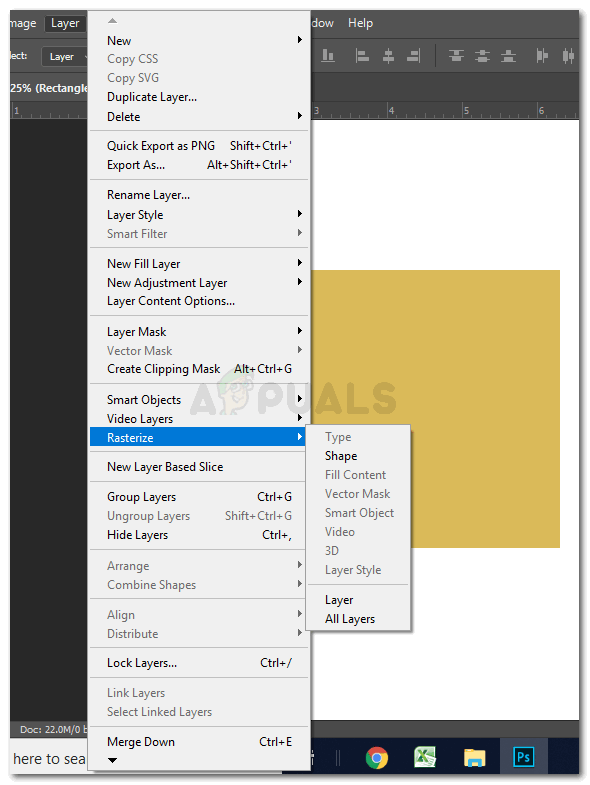How Does ‘Rasterizing’ an Image or a Shape Help the Designer?
Designers, who work with Adobe Photoshop or are new to designing must know that in Adobe Photoshop, whatever you create, whether it is typography or a shape/image, it is formed in a vector layer. This means that if you take a close look at these vector layers, the edges of the object would be clear and very sharp. By rasterizing a certain layer, you make the image/shape editable in a pixel format. Now, if you take a closer look at the image or shape, you will notice the small box-like edges to the shape. And once you have chosen to rasterize a layer, there are chances you might lose the quality if you continue to edit it. So make sure that you always keep the original layer saved, and work on a duplicate instead of such quality errors. And being a designer myself, working with layers is much easier as you can always duplicate the original layer and keep making the changes until you get the output you have been expecting.
How to Rasterize a Layer?
There are two ways to access the option for ‘rasterize’ when working on Adobe Photoshop.
Why Do You Need to Rasterize a Layer?
As I mentioned earlier, when you rasterize a layer, you change the format from a vector layer to a pixel layer. Since everything in a vector is clear when you zoom in, this sometimes might not be the preferred effect that a designer wants. To play with their design, to make the design a bit more arty, pixel layers is what some designers need. For instance, you drew a shape on Adobe Photoshop and wanted to add the ‘distort’ effect over the shape. But when you try to add this effect on the design that you created, a dialogue box appears which asks you to rasterize the layer. So for similar effects on Adobe Photoshop, ‘rasterizing’ the layer becomes a compulsory action for the designer. Some of the filters might not work if you don’t rasterize the layer. You can always try all the different filters and effects available in the program and experience the difference in the shape before and after you rasterize it.
Should You Rasterize a Layer Before or After Adding Filters?
The requirements of every designer vary from one another. But you should understand the effect rasterizing a layer before and after adding a filter would have on the image/shape or text that you just added. Say for example that you added a shape to your artboard, added an effect over the shape, and then rasterized the layer. This would keep the effects that you just added, and the shape that you added, as separate objects of your work, and still make the effects editable for you. While on the other hand, if you add some filters after rasterizing a layer, the filters will only be applied on the text and the shape that you added, and not the effects, which can turn out to be a disaster for you.
Using Smart Objects
Smart Objects, make a layer editable while keeping the quality of the layer intact. The option for converting an image to a Smart Object often appears when a specific filter has to be applied. You can choose the option ‘convert to smart object’ instead of clicking on rasterize.
Photoshop Without Photoshop - 7 of the Best Open-Source & Free Photoshop…How to Resize a Layer in Photoshop?SOLVED: “Unable to initialize audit layer: Permission denied” bug in libvirt-bin…AMD’s Zen 4 CPUs Showcased With Phison Gen 5.0 SSDs and Micron’s 232 Layer NAND



